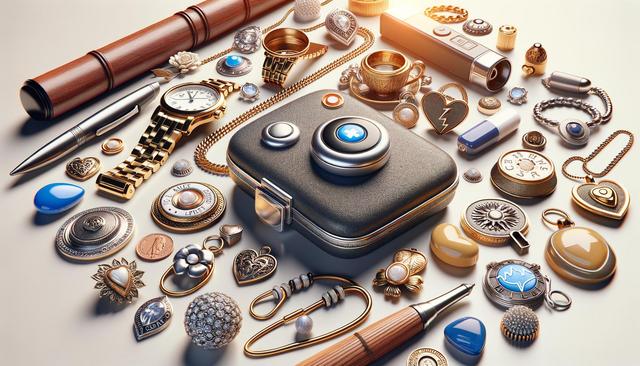
Staying Protected: The Role of Senior Medical Alert Jewellery
What Is Senior Medical Alert Jewellery?
Senior medical alert jewellery is a wearable accessory that displays critical medical information about the wearer. Common forms include bracelets, necklaces, or pendants engraved with details like chronic illnesses, allergies, emergency contacts, or medications. These items are particularly important for elderly individuals who may face sudden medical emergencies and need assistance quickly. First responders and medical personnel are trained to look for these identifiers, which can significantly reduce response time and improve the accuracy of treatment.
These wearable items are discreet and come in various styles, making them both functional and comfortable for everyday use. Some even include advanced features like QR codes or USB storage with more detailed medical histories. For seniors living alone or dealing with complex health conditions, wearing a medical alert item can be the difference between a fast, appropriate response and a delayed, potentially harmful one.
Who Should Consider Wearing It?
Senior medical alert jewellery is suitable for a wide range of individuals, particularly older adults who face health challenges or live independently. Those with the following conditions or circumstances may benefit most:
- Chronic illnesses such as diabetes, heart disease, or epilepsy
- Allergies to medications like penicillin or foods like peanuts
- Memory conditions including Alzheimer’s or other forms of dementia
- Use of life-sustaining devices like pacemakers or insulin pumps
- Living alone or being at risk for falls or sudden illness
Family members and caregivers often find peace of mind knowing their loved ones have an added layer of protection. In many cases, seniors may not be able to communicate during an emergency, making these accessories an essential tool for first responders to make informed decisions quickly.
Types of Medical Alert Jewellery Available
There are several types of senior medical alert jewellery available on the market today, each designed to cater to different needs and preferences. The most common forms include:
- Bracelets: Usually worn on the wrist and engraved with vital information. Popular for their visibility and accessibility.
- Necklaces: Often feature a pendant that can be flipped or opened to reveal data, or engraved directly onto the surface.
- Smartwear: More advanced options may include digital storage, QR codes, or built-in GPS tracking for enhanced functionality.
Material options range from stainless steel and silicone to more premium metals like titanium. Some are designed to look like everyday jewellery, making them less noticeable as medical devices but still highly effective. This variety allows seniors to choose pieces that match their lifestyle and comfort preferences.
How to Choose the Right Medical Alert Jewellery
Selecting the most suitable senior medical alert jewellery depends on several factors. First, consider the type of medical information that needs to be included. For individuals with multiple conditions or medications, a larger surface area or digital storage may be ideal. Here are a few tips for choosing the right one:
- Ensure the engraving is clear and easy to read
- Choose durable materials that can withstand daily wear
- Opt for waterproof options if the wearer is active or frequently in contact with water
- Consider comfort and ease of use, especially for those with arthritis or limited dexterity
- If needed, select designs that include additional tech features like GPS or emergency call buttons
Consulting with a healthcare provider can also guide the decision, as they can recommend what information is essential to include. Some providers may even suggest specific formats or styles based on the individual’s health condition.
Caring for and Maintaining Your Medical Alert Jewellery
Maintaining senior medical alert jewellery ensures that it remains functional and legible over time. Regular cleaning is key, especially for engraved pieces, to keep the information visible. For metal jewellery, a mild soap and water solution can help remove dirt and oils without damaging the material. Silicone bracelets can usually be wiped clean or hand-washed as needed.
It’s also important to periodically review and update the medical information displayed. Health conditions, medications, or emergency contacts can change, and outdated information may pose risks during emergencies. Some styles allow for easy updates, while others may require re-engraving.
Here are a few general care tips:
- Check the readability of engravings every few months
- Store the jewellery in a dry, cool place when not in use
- Inspect chains, clasps, or straps for signs of wear or damage
- Replace or update items promptly if health information changes
By keeping the jewellery in good condition, seniors and their caregivers can ensure it continues to provide reliable, life-saving information when it’s needed most.
Conclusion: Empowering Seniors Through Safety
Senior medical alert jewellery serves as a practical tool for enhancing safety and independence among older adults. Whether living alone or managing complex health conditions, having quick access to vital health information can significantly impact the outcome of an emergency. These accessories are more than just identifiers—they are a form of protection, helping caregivers, emergency personnel, and loved ones provide the right care at the right time. By choosing a style that fits comfortably and meets individual medical needs, seniors can maintain peace of mind while continuing to enjoy their daily lives with added security.


